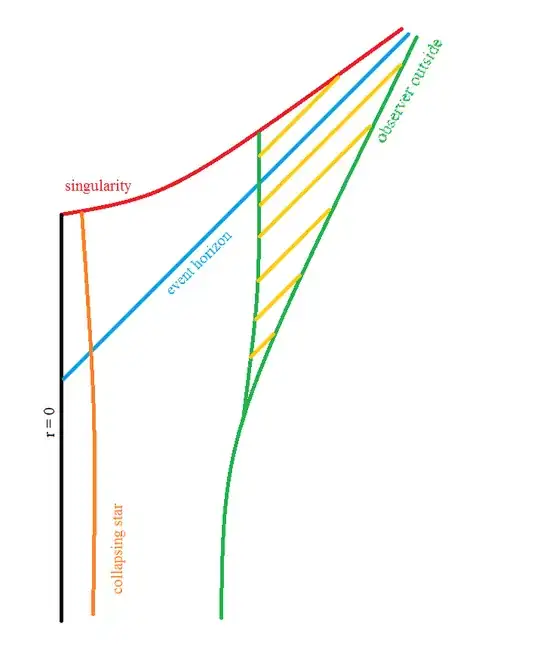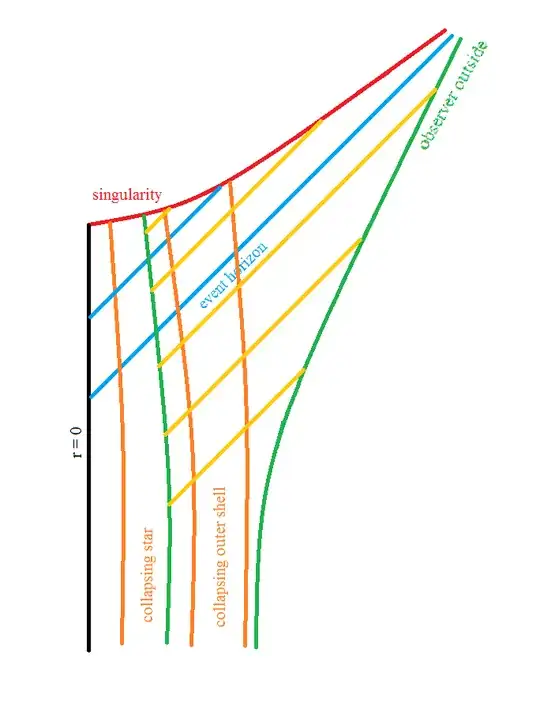Yes they grow as mass or energy is added in. It's not complicated, and well understood, within General Relativity. With one caveat.
The caveat if that a body that almost reaches the horizon gets so close to it even as time slows down infinitely (theoretically) that for all practical purposes you can cconsider it to have been absorbed into the black hole (BH). That deals with the confusing issue of time slows infinitely at the horizon. It's dealt with in other questions on this site
The horizon radius of a Schwarzschild BH is (first reference at bottom)
$R_h = 2GM/c^2$
There's an equation for rotating and charged BHs also, with the the charge and angular momentum entering in. The details are not too important for the purposes here.
When matter is added, carefully and radially to make sure it does not add angular momentum, the horizon radius increases proportionately to the amount of mass added (but see below you may also be adding 'kinetic and potential energy' in, so it must be accounted as part of the toal mass, or energy, added). Simple from the equation, thehorizon grows. In realistic simulations with small masses added in the exact calculations show the horizon reaching out some to meet the added mass and swallow it. A similar effect is true for rotating black holes. Except for Hawking radiation which is a quantum effect, nothing escapes the BH and the radius can grow or stay the same (if no matter added), but never decrease. The surface area of the horizon increases as the square of the radius.
If you add a larger mass it increases that much more. If the mass being added is from an extended body, the gravity of the BH can be enough to break up that body with tidal forces and have parts of it flowing into the BH first, until it swallows it all up. If the body was orbiting around the BH, it'll fall in partially in tangential orbits, and add angular momentum to the BH (and then we have to use the Kerr metric).
Note that these property of the BH horizons 'rising' to meet the incoming mass, i.e., the distortion of the horizon as an external disturbance affects it, can also be seen for instance in this simulated video of two BHs merging at https://m.youtube.com/watch?v=I_88S8DWbcU. Notice the distortions of the horizons as they come closer. Others simulations have shown the effect also.
In general the equations for BH thermodynamics, which describes how BHs can grow, , i.e. how it's parameters can change, is given from the second reference below, as
dE = (k/8$\pi$) dA + $\Lambda$ dJ + $\Phi$ dQ
where the E is energy (mass), the second term is term is angular velocity times change in angular momentum (i.e., rotational energy), and the third is the electrical energy as electrical potential time the charge change in the BH (eg, by accretion of charge). The second law of BH thermodynamics is that
dA can not be negative (since A is proportional to entropy which cannot decrease).
Thus, not only can they accrete matter, but also charge and angular momentum. It turns out that one can also extract angular momentum and charge from the BH, and thus energy. Just the amount of energy/mass corresponding to the area A can not be made lower, since A cannot decrease. It's sometimes called the irreducible mass.
https://en.m.wikipedia.org/wiki/Schwarzschild_radius
https://en.m.wikipedia.org/wiki/Black_hole_thermodynamics

